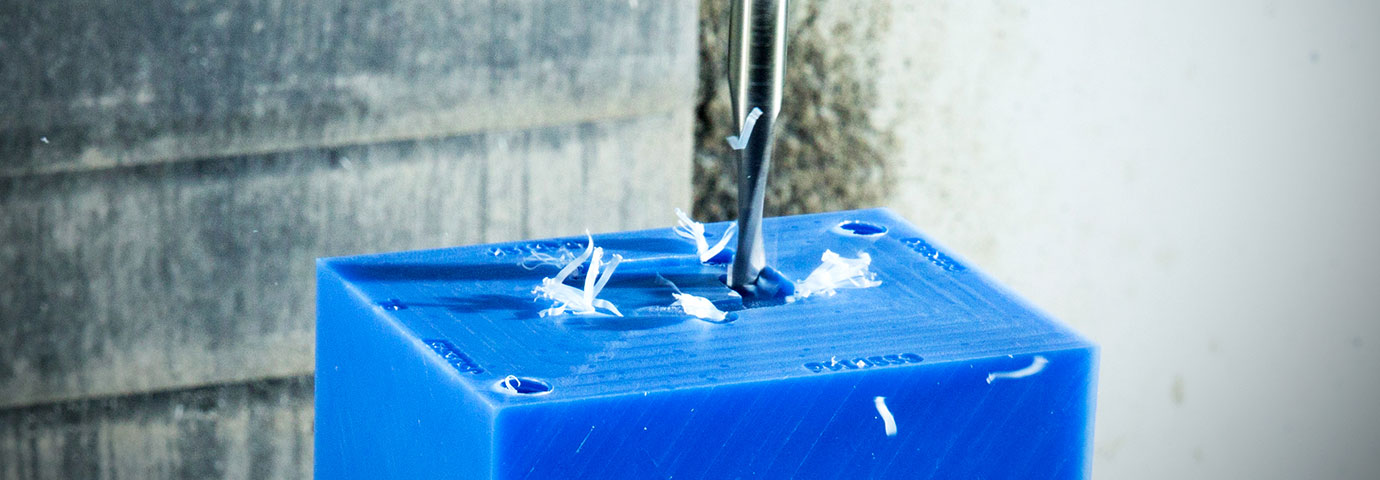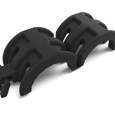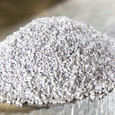We’ve all heard of nylon, and most of us touch it daily. First synthesized in 1935 by chemist Wallace Carothers of DuPont, this well-known polymer was first used to replace silk in women’s stockings. But World War II significantly broadened nylon’s scope, and the novel material soon saw applications in everything from parachutes to truck tires, and tents to fuel tanks. It has become one of the most popular and widely used synthetic fibers ever invented.
Nylon is a polyamide, or PA, a group of synthetic and natural polymers that depend on amide linkages (a carbonyl group bonded to a nitrogen atom) for superior strength and durability. Other examples include Kevlar, Nomex, Pebax, and similar high-performance materials. Like nylon, all boast a range of desirable qualities—Kevlar, for example, is known for its toughness, which led to its use in bulletproof vests, while Nomex is often found in firefighting apparel.
Of course, we don’t make clothing items, but we do manufacture a huge variety of unique, high-quality parts from more than two dozen grades of nylon. This article examines some of the properties and applications for these different materials, and touches on the manufacturing technologies used to process them.

Nylon is known for its strength, durability, and chemical resistance.
Nylon 6 (PA 6): Resilient, but Avoid Water Contact
Stroll through our machine shops and you might see parts being CNC milled from PA 6, a type of nylon synthesized from the organic compound caprolactam. The polymer chains within nylon 6 are made of repeating rings of six carbon atoms each, hence its name. Like other nylons, PA 6 is known for its high tensile strength, toughness, and elasticity. It does, however, have a notable ability to absorb moisture that can negatively affect its dimensional stability and mechanical properties. Nylon 6 begins to melt at around 428°F (220°C). It is resistant to many chemicals, oils, and solvents, is self-lubricating, and exhibits good abrasion resistance.
With a weight one-eighth that of bronze, suitable applications for nylon 6 include gears and bushings, automobile components like intake manifolds and engine covers, and thanks to its electrical properties, it is often used for insulators and connectors. We offer two grades of cast nylon 6—PA 6 Black and PA 6 Blue—the latter of which is heat stabilized for a 10% increase in operating temperatures.
Nylon 6/6: Tougher and More Wear-Resistant
What a difference a few carbon atoms make! Nylon 6/6 (aka Nylon 66 or PA 6/6) is synthesized from two monomers—adipic acid and hexamethylenediamine—each contributing rings of six carbon atoms, which gives it the 6/6 suffix. These repeating rings increase the material’s tensile strength, toughness, and durability compared to nylon 6, while lowering its potential for moisture absorption and increasing its melting point to around 500° F (260° C). This makes nylon 6/6 a tougher, stronger (by about 20%), more wear-resistant big brother to nylon 6, even though it is found in many of the same applications.
In our machine shop, two grades are available—nylon 6/6 natural and nylon 6/6 glass-filled (more on fills later), while the plastic injection molding service offers many flavors of PA 66, most with some type of filler material included. Again, more on these in a moment.
Nylon 6/12 (PA 6/12): Moisture-Resistance for Molding
Also found in the plastic injection molding department is Nylon 6/12, which boasts alternating molecules of the monomers hexamethylenediamine (with 6 carbon atoms) and dodecanedioic acid (12 carbon atoms). It's a bit less strong than PA 6 or PA 66 and has a melt temperature that sits between the two, but it is less susceptible to moisture absorption than either.
Your toothbrush bristles might be made of PA 6/12, not to mention the fuel lines in your car, the sheathing around its electrical cables, the zippers on your camping tent, and any other applications where a more stable, moisture-resistant grade of nylon is needed. We offer a 33% glass-filled version of polyamide 6/12—Zytel 77G33L NC010—for injection molding, which its maker DuPont labels a “performance polymer” with additives for lubricity and moldability.
Nylon 11 (PA 11): Printing a Sustainable Plastic
Let’s turn to 3D printing. PA 11 is synthesized from 11-aminoundecanoic acid, a monomer derived from castor oil. This makes it one of the "greenest" nylons, although all of them present certain recycling challenges. As you might have guessed by now, each repeating link of Nylon 11’s polymer chains contains 11 carbon atoms. We use powder made from black PA 11 in its SLS (selective laser sintering) 3D printers.
The material offers a nice balance of strength and flexibility as well as excellent impact resistance, especially at low temperatures. It also absorbs less moisture compared to nylon 6 or 6/6, giving it better dimensional stability in humid conditions, but has a lower melting point of 410° F (210° C). Combine these qualities with high UV resistance and you'll find PA11 a first choice for many outdoor applications—ski boots and other sporting goods, for instance, or parts that contain snap fits and living hinges.
Nylon 12 (PA 12): Solid Performer with a Different Molecular Shape
PA 12 is another go-to material, used in both SLS and Multi Jet Fusion 3D printing. It is a linear aliphatic polyamide, meaning its structure is composed of open chains of carbon atoms (12, in this case) as opposed to rings. It exhibits excellent chemical resistance, especially against various chemicals, salts, and oils, but has a lower melting point—approximately 356° F (180° C). And like PA 11, it absorbs less moisture than other polyamides, making it dimensionally stable across a range of environmental conditions.
Black and white grades are available, as are glass- and mineral-filled versions, both of which enhance PA 12’s mechanical and thermal properties. Enclosures and fixtures are often printed from PA 12 (filled or unfilled), as are some catheters and other medical components (PA 12 is among the more biocompatible of nylons), automotive fuel systems, cosmetics packaging, electrical connectors, and much more.
Filling in the Blanks
As indicated earlier, we offer about two dozen grades of nylon for use in the injection molding process alone. With a few exceptions, most of these are based on nylon 66 with varying types of fillers. Glass-filled nylons are the most common, which as their name suggests, are reinforced with glass fibers to enhance their mechanical strength, stiffness, and dimensional stability. The percentage ranges between 13% (Hylon Select N1013HL) to 33% (Vydyne R533H and Zytel 70G33 are two examples).
Mineral-reinforced nylons are also available, such as Minlon 10B40, and nylons that contain impact modifiers (Zytel ST-80) or UV stabilizers (RTP 200 200 UV). As noted, these and several other “specialty” nylons provide greater performance in demanding applications, albeit at a premium price.
Finally, please note that while glass and mineral fillers bring significant benefits to the injection molding party, they are also more abrasive than their unfilled counterparts and tend to wear mold cavities and cores more quickly.
As always, you can check with your Protolabs representative for advice on polymer selection, mold design, and other manufacturing concerns early in the project development process to avoid issues down the line.

If you have any issues getting your guide, click here to download.










